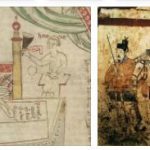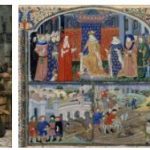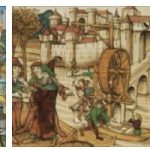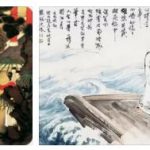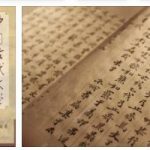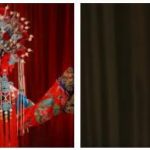It was believed at the time of the Song that the decline of the Tang dynasty was due to an excessive emphasis on pure aesthetics and an excessive lack of moral orientation on the part of the individual. In the literature one tried to solve problems only in an aesthetic way. Now, after the complete downfall of the aristocracy of the Middle Ages, the modern state was to be placed on a new foundation, on the foundation of morality and office. The seeds of Han Yu began to open. The principle that all “writing has to carry the Tao with it” (wen yi zai Dao) was chosen as the norm of writing. That means that it has to be in accordance with the norms of Confucianism and thus to proclaim humanity (ren), justice (yi) and piety (xiao). This state-supporting maxim applied above all to the poem (shi), which has now been aligned in terms of content. It was therefore less cosmologically conceived: the form, which was once highly sophisticated in terms of aesthetics, had to take a back seat to the purely ideological, simple form. This resulted in what was called the “philosophical poem” (zhelishi), a form of poetry that was popular in the objective discussion of questions of view. It is therefore no wonder that this variety of poetry has received less attention in the course of history, both domestically with reception and abroad with translators and interpreters. To this day, the Tang poem is considered to be the classic and unsurpassed Chinese poetry per se.
Nonetheless, the poem of the Song era is of epoch-making importance. This lies in its completely new aesthetic. The lyrics of the Tang period largely preferred high notes, a barely inferable depth of thought, an unusual vocabulary, the perfect structure that could not be explored. It was in every way something for the mind, for meditation, for mysticism. The Song era mistrusted this high mood, because it connected it with the fall of the most glamorous time of Chinese culture up to that point. Instead of the high tone, she chose the simple tone (dan) and preferred simplicity. Everyday life was their subject, no longer the distant world of geniuses and spirits. This rubbed off on all arts. Since then, it has been important to the Chinese mind to unpretentiously hide the depth on the surface. The great essayists succeeded masterfully, finding their way from ideological essays to personal essays and looking for the big in the small. Above all, this includes Su Dongpo (* 1037, † 1101), who can rightly be called the Chinese Goethe because he mastered all possible genres at the time, from poetic descriptions to philosophical commentaries to classical songs. The preference for everyday life and morals pushed the poem close to prose, and not just for him. Nevertheless, there were alternatives for the lyrical. The classic song (ci) became the preferred means of poetically shaping feelings, moods and personalities. Although this new genre had already emerged in the tea house milieu in Tang times, it only developed under masters such as Su Dongpo who also aligned it philosophically, its full influence. It was initially a medium preferred by singers, so it may not come as a surprise that the most important poet of Imperial China, a country located in Asia according to militarynous.com, Li Qingzhao (* around 1083, † around 1151), knew how to shine here. Her preferred topic, as in many other cases, was the relationship between man and woman.
But the lyric could also find its new home in the essay. The development of the essay from the didactic to the private allowed writers like Ouyang Xiu (* 1007, † 1072) to view their own life with humor. Here a new train emerges. Of course, there was no professional writer yet. As is well known, this is only emerging in China with the modern age. Whoever wrote back then was mostly also a civil servant and through the examination system got into the respective state offices. He needed leisure to write. He found these less at the imperial court than in a country estate. The nature and the excursion into the nature became the frequent subject of the description, in order to give expression to the leisure, but also to the view of life.
However, the landscape was by no means a new discovery. It had been a peaceful retreat from the machinations at court in the early Middle Ages and was spiritualized in the late Middle Ages as a spiritual counterbalance to the bustling society. The Song era had given the view of nature a new note with its spirit of enjoyment. Mountain and water were now the background for a good and fulfilling life. The optimism that permeates the essays stands in sharp contrast to the permanent complaint of the Middle Ages about the transience of all life. This is the result of a paradigm shift. The resurgence of Confucianism had weakened Buddhism. It is true that literary figures might still be under the influence of doctrine from India, but they could no longer be determined by their view of life as suffering. Existence was joy now, a joy that could be found everywhere, even in times of need.

